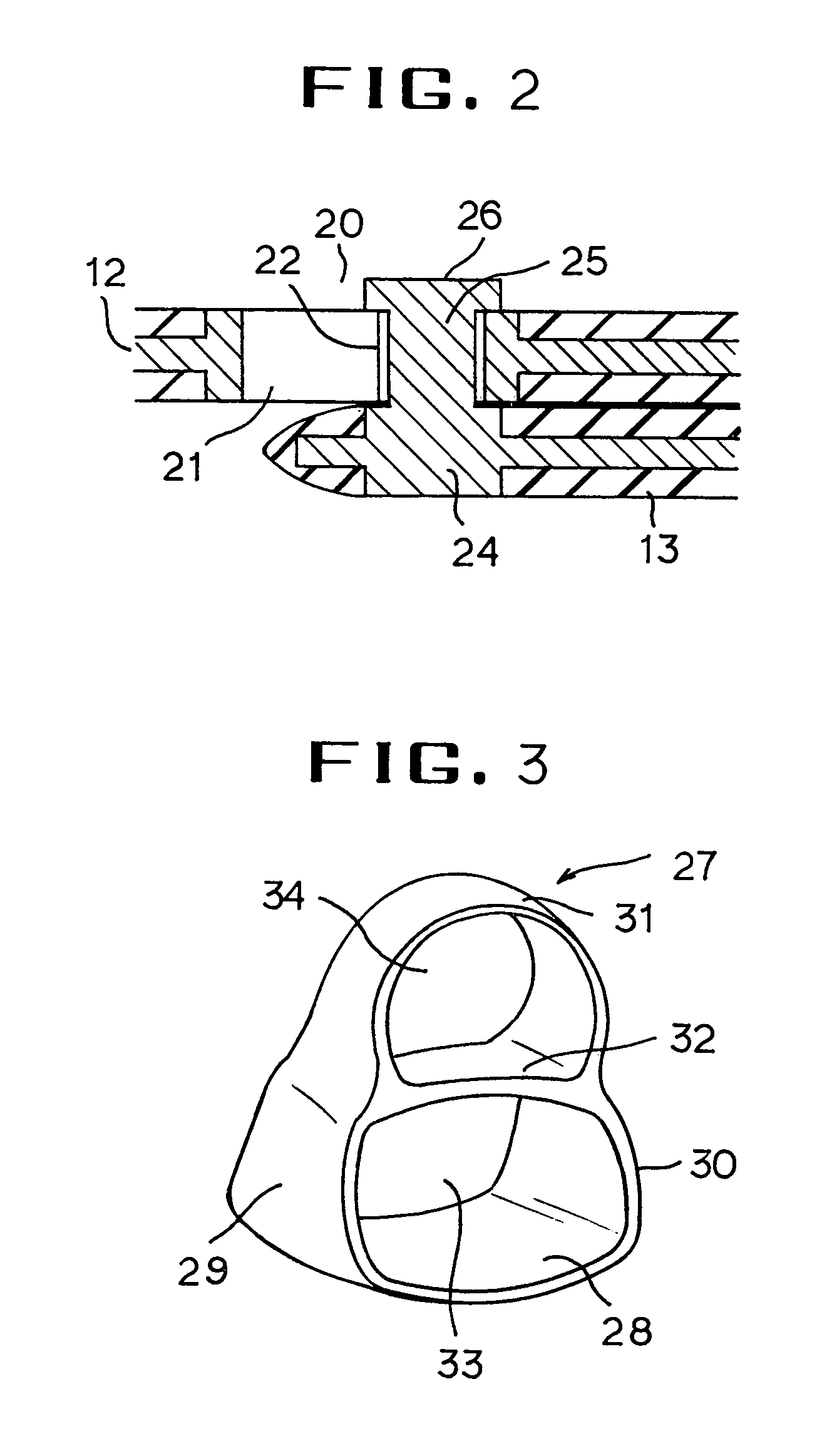Pet collar
a technology for pet collars and collars, applied in the field of pet collars, can solve the problems of unreasonably high retail price, and achieve the effect of simple structure, no manufacturing cost, and streamlined look of pet collars
- Summary
- Abstract
- Description
- Claims
- Application Information
AI Technical Summary
Benefits of technology
Problems solved by technology
Method used
Image
Examples
Embodiment Construction
[0019] Referring to FIG. 1, the dog collar 10 of the present invention has a strip like body 11. The collar body 11 is generally comprised of a plastic base 12 and a rubbery outer layer 13. The body 11 has a first surface 14 facing outward of the closed collar 10 and a second surface 15 facing opposite to the first surface 14, i.e. inward. FIG. 1 shows a cut away view of base 12 beneath the surfaces 15, 14.
[0020] The outer layer 13 constitutes a soft cover over the base 12 except selected areas exposed where more hardness is desirable. Preferably, the base 12 has one color while the outer layer 13 has another, such as a neon or glow-in-the-dark color. This two tone color scheme gives the color contrast between the outer layer 13 and the exposed portions of the base 12 that is beneficial in connection with using fastening means as will be explained in detail below. The soft layer preferably of thermoplastic rubber can also be semi transparent allowing a user to see the base strip pr...
PUM
 Login to View More
Login to View More Abstract
Description
Claims
Application Information
 Login to View More
Login to View More - R&D
- Intellectual Property
- Life Sciences
- Materials
- Tech Scout
- Unparalleled Data Quality
- Higher Quality Content
- 60% Fewer Hallucinations
Browse by: Latest US Patents, China's latest patents, Technical Efficacy Thesaurus, Application Domain, Technology Topic, Popular Technical Reports.
© 2025 PatSnap. All rights reserved.Legal|Privacy policy|Modern Slavery Act Transparency Statement|Sitemap|About US| Contact US: help@patsnap.com



